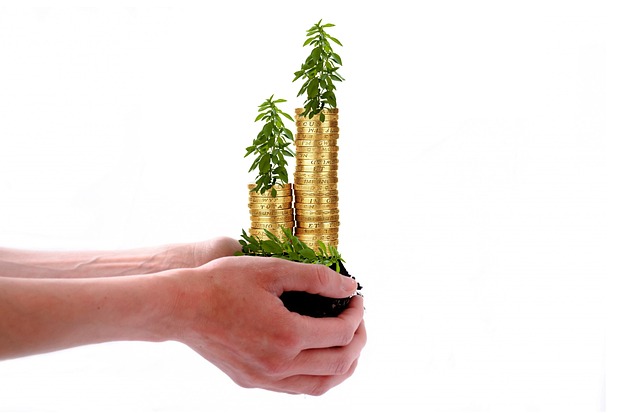

A consumer loan is a financial product offered by banks and other financial institutions to consumers. This product enables the consumer to finance specific expenditures. These expenditures include purchase of a home or automobile, payment of medical bills or student’s tuition and living expenses and personal expenditures.
These loans can either be secured or unsecured. The secured ones are backed by an asset of equal or higher value than the loan amount. The unsecured ones on the other hand are not backed by any asset.
How Does Consumer Loans Work?
This type of loan can be structured as a fixed loan or a revolving credit. A fixed loan is one that is paid back over a specific period while a revolving credit can be used and repaid at the user’s discretion. These loans fall under two categories which are closed loans and open-ended loan.
Closed Loans
These are credit facilities that are structured with a monthly payment, fixed interest rate and repayment terms. Loans that fall under this category are student’s, mortgage and auto loans.
Open-ended Loans
These types are often more flexible and are tailored to the needs of the borrower. Some of these loans include lines of credit for home equity and credit cards.
One other thing that affects the way that these loans work is the types of rate that they come with.
Fixed Interest Rate
This interest rate remains stable all through the period of the loan. This assures the consumer that the interest rate will not increase over the loan term. Sometimes this rate can also be fixed for a particular period during the loan term.
Fixed rates are often higher than other types of rates because they mitigate the risks of a rate that fluctuates and can be affected by the vagaries of the economy.
Variable Rate
This type of rate fluctuates according to the prime rate. It will go up if the prime rate increases and come down if the prime decreases.
Prime Rate
The base for the rates that financial institutions and banks charge on all the types of loans that there are is known as prime rate. It determines whether new or variable rates will rise or fall. The higher this rate is the more expensive it will be to take out credit facilities.
It is usually the Apex bank in a country that determines the prime rate and they set it based on many variables.
Repayment Options
Most banks and financial institutions have a variety of payment options for their consumers. These options are made flexible so that they can meet the needs of their consumers. Below are some of these options:-

Types Of Consumer Loans
The term consumer loan is a broad one that encompasses different types of loans. These include personal, student, credit card, auto, mortgage, refinance and medical loans. We will devote this segment to explaining the different types of consumer loans.
Mortgage
This is a credit facility given to an individual to purchase a home. It can also be extended to a corporate body for the acquisition of real estate. The two major criteria for qualification are a good credit score and the ability to make a down payment.
Auto Loans
These are advanced to consumers to facilitate the purchase of automobile. One can get this credit facility either from a bank or from a car dealer. Some people argue that it is better to get this facility from a bank than from a car dealer. This they say is because the interest rate is more favourable with banks than with a car dealer.
Credit Cards
This is a credit facility that almost everyone uses even without being aware. With this card, the holder can make payments for goods and services. This is a revolving line of credit which means that the borrower has a credit limit that they can access.
When they pay back this amount (after they have spent it), they can get the same amount again. There is a minimum amount that must be paid at the end of every month and failure to do this will incur interest and some fees.
Student Loan
This is targeted at helping students pay their school fees and other expenses that come with schooling. Most often these loans are not due for repayment until the borrower has graduated and started earning an income.
Home Equity
In this kind of credit facility, the borrower uses the equity they have in their home to borrow money. Most often, this type of loan is used for renovation and home improvement.
Refinance
This is a credit facility that enables the borrower to replace an existing loan with one that has better terms and conditions. Loans that can be refinanced include housing, auto, mortgage, credit cards and student loans.
Most often these loans come with fixed interest rates that are lower to indeed help the borrower pay off the loan easily and not get into the position that led to a refi in the first instance.
Persona Loan
As the name implies, this is a credit facility that is extended to an individual without any particular purpose. This means that borrower can do whatever they wish with the money. They can use the money to fund their vacation or make a major purchase.
Qualification for Consumer Loans
In most countries of the world, banks seem to favour consumers between the age of 21 and 60 years especially for salary earners. Some banks may push up the limit to 65 years for self-employed people or entrepreneurs.
Another factor that is often considered is the credit history and score of the borrower.
Some of the documents that one may be required to present include the following:-
- Proof of Identity – This can be certificate of citizenship, driver’s license, state ID , birth certificate or even Utility bill
- Proof of Income- This can either be Payslips, tax returns or bank statement
- Proof of Address – This can be a tenancy agreement or utility bill with the address
- Miscellaneous documents – This can include, your current loan statement or credit card, for refi you might need your original mortgage agreement.
How to Enjoy the Benefits of Consumer Loans
Now that you have known the basics of consumer loans, below are some points to bear in mind so that you can enjoy the benefits:-
- Never take out a loan without have a concrete reason why you need the loan.
- Always have a solid repayment plan even before you apply for the loan.
- Carry out in depth research and compare offers before you settle on any option.
- Always consult an expert if in doubt about any aspect of the loan agreement.
- Ensure that you read and understand the fine prints before you sign any document.
Conclusion
From our everyday interactions with people and observation in society, we can categorically say that loan as a financial product is here to stay. Since this is something that we might need at one point or the other in our lives, we believe that it is necessary for everyone to have a basic understanding of how it works.
Our objective in this article is to give us this basic understanding and I believe the information we shared here is quite useful. So bear them in mind to enable you make informed financial decisions.





